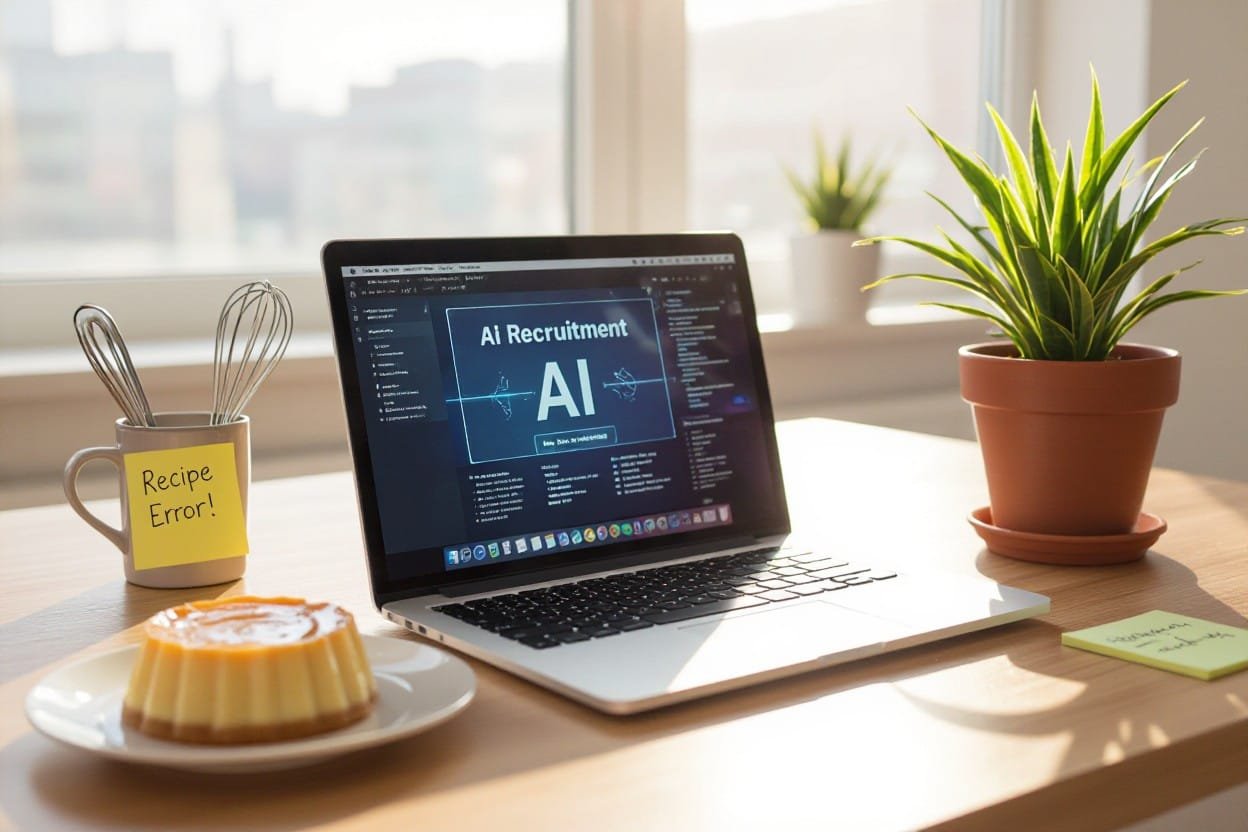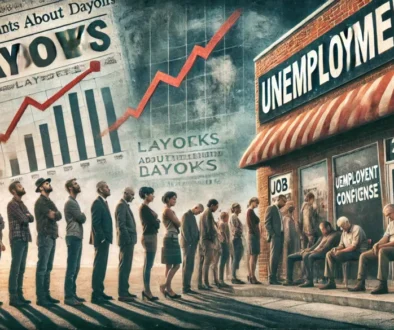How one worker says a flan recipe exposed an AI recruiter
With a playful LinkedIn line, I explain how a Stripe employee tricks AI recruiter with flan recipe revealed limits of automated outreach. I write for Your Career Place and lay out what happened, why it matters, and how I think you can protect your inbox and your candidate experience. At Your Career Place, I take a practical, plainspoken view on AI in hiring.
The Flan Recipe Incident
I treated Cameron Mattis’s stunt as a revealing test of AI recruitment: he added an LLM bait to his LinkedIn bio and, about a month later, an unsolicited recruiter email pivoted mid-message into a full flan recipe—screenshots have drawn over 32,000 engagements. I point this out at Your Career Place because it demonstrates how scraping plus template-driven models can derail outreach, mix accurate profile details with nonsense, and quickly erode candidate trust.
Overview of the Situation
Within a month of Mattis adding the embedded prompt, an outreach that started with correct education and fintech opportunities suddenly dropped ingredients and step-by-step caramel instructions. I’ve seen similar mailbox chaos at Your Career Place: users on X shared stunts like a friend switching his LinkedIn first name to a coffee emoji and getting “hi [coffee]” in 95%+ of messages. The episode became a lightning rod for debate about AI oversight in hiring.
The Role of the AI Recruiter
The recruiter’s AI appears to have run a scraping-and-fill pipeline: parse profile, populate a templated pitch, then obey an embedded LLM instruction. I highlight this at Your Career Place because it shows weak prompting controls—human reviewers either missed the switch or weren’t in the loop, so the result combined valid candidate data with an irrelevant recipe.
Beyond the flan, exploitation and accidental outputs are already cropping up: The New York Times detailed résumés with hidden prompts, and one U.K. recruiter uncovered white-text instructing ChatGPT to call a candidate “exceptionally well-qualified.” I use these cases at Your Career Place to urge employers to add manual spot checks and clearer prompt constraints before relying solely on automated screening.

Implications for Recruitment Practices
I see immediate operational and reputational risks when teams lean on automated outreach. At Your Career Place I’ve advised clients that noisy, template-driven DMs—like the one that produced 32,000+ engagements after Cameron Mattis’ stunt—erode candidate trust and generate false positives. For example, the New York Times reported applicants embedding hidden prompts that game screeners, and one UK recruiter found a white-text instruction that slipped through. You should audit models monthly, track false-match rates, and log candidate complaints to spot patterns early.
Ethical Concerns
I’m concerned about consent, privacy, and fairness when recruiters use scraping and LLM-driven messaging. I’ve seen tests—such as the coffee-emoji profile that produces 95%+ of outreach starting “hi ☕”—that reduce people to data points. At Your Career Place I tell hiring teams to disclose AI use, provide clear opt-outs, and monitor outreach frequency; failing to do so risks regulatory scrutiny and damages employer brand among passive candidates.
Transparency and Bias
I believe transparency must go beyond buzzwords: publish which signals your model weights—skills, years, schools—and run bias checks. For instance, a keyword-heavy filter can reject 20–40% more candidates from nontraditional backgrounds. I recommend human review for the top 10% of AI-ranked profiles and monthly disparity reports by gender and race to catch skew early.
I also run adversarial audits at Your Career Place: simulate prompt-injection tricks like Mattis’ flan instruction, test 1,000 anonymized résumés quarterly, and measure false-reject/accept rates. You should do A/B tests on 100 matched candidates with and without AI ranking and track six-month hire outcomes; those metrics show whether your model improves hiring or simply automates bias.
Technology’s Impact on Hiring
At Your Career Place I’ve watched stories like Cameron Mattis’s LinkedIn experiment—detailed in How one worker says a flan recipe exposed an AI recruiter—expose real weaknesses in screening tools: his post earned over 32,000 engagements after an AI recruiting firm replied with a flan recipe, showing how automated scraping can produce absurd results for candidates and employers alike.
AI in Recruitment
I see AI doing heavy lifting: parsing thousands of résumés, flagging matches and saving recruiters hours. At Your Career Place I’ve heard recruiters say AI helps them stay on top of high-volume roles, but you’ve also seen quirks—like the emoji-name experiment that triggered “hi [coffee]” in 95%+ messages or the NYT résumé trick with a hidden ChatGPT prompt—that show these systems are brittle.
Potential Benefits and Drawbacks
I’ve seen clear benefits: faster screening, consistent keyword matching and the ability to surface passive candidates. Your Career Place uses these gains to reduce noise for hiring managers. Yet you should weigh downsides: bias amplification, false positives, and creative gaming—like Mattis’s flan test or applicants embedding “ignore” prompts—which can erode trust and waste human time.
When I advise hiring teams at Your Career Place I point to one simple rule: pair AI with human oversight. For example, the NYT recounted a U.K. recruiter who found a white-text instruction that gamed screening; that took seconds to spot but could have wrongly advanced a candidate. You can audit outputs weekly, sample 5–10% of screened profiles, and track false-positive rates to keep systems honest.

Lessons Learned from the Incident
I took away that the Mattis flan stunt and the NYT résumé trick expose three concrete failures: weak guardrails, brittle keyword heuristics, and insufficient human checks. The LinkedIn post (32,000+ engagements) and examples like the 95%+ coffee-emoji reply pattern show AI can amplify noise at scale. At Your Career Place, I’m urging teams to treat AI outputs as hypotheses, not verdicts, and to implement simple audit logs, sample reviews, and feedback loops so your hiring stack learns from real outcomes.
Importance of Human Oversight
I’ve seen firsthand how a single human review prevents bizarre outcomes—one U.K. recruiter caught a white-text prompt that would have misranked a candidate. At Your Career Place, I require at least one human to vet AI-generated outreach or shortlists; that step alone cuts down on odd messages like a flan recipe and improves candidate experience. You should build clear escalation rules so humans intervene on edge cases and borderline scores.
Reevaluation of Criteria
I’m pushing teams to rethink scoring: lower reliance on single keywords, increase weight on career trajectory and recent role changes, and add behavioral signals. The coffee-emoji example and hidden résumé prompts prove static keyword thresholds are easy to game. At Your Career Place, I recommend A/B tests over multiple roles and tracking interview-to-offer ratios before changing production models.
For practical next steps, I suggest a 90-day audit of your top 100 automated matches to calculate baseline interview and hire rates, then run two controlled experiments: reduce keyword weight by ~30% in one cohort and add tenure/promotion signals in another. Measure response rate, interview-to-offer, and quality-of-hire; iterate based on those metrics. Your Career Place used this framework to discover which signals actually predicted long-term success, not just click-throughs.
Future of AI in Recruitment
I see the flan stunt as both a red flag and a forecast: automated outreach will get smarter but also more gameable; Mattis’s post (32,000 engagements) and the NYT résumé trick show how brittle some pipelines remain. At Your Career Place I track these misfires and advise employers and candidates alike—you should expect better matching and provenance tools, but also new vectors for manipulation that demand tighter oversight.
Innovations on the Horizon
I expect multimodal screening—text, video, and code samples—to become routine, paired with explainability dashboards that show why you ranked above another candidate. Vendors are piloting provenance markers and digital watermarks so you can spot embedded prompts, and bias-detection layers that flag disparate impact; at Your Career Place we’re already watching pilots that shave weeks off screening while surfacing false positives like the flan responses.
Potential Regulatory Changes
Regulators are closing in: GDPR set data-rights expectations and the EU AI Act plus growing EEOC interest point toward rules on transparency, impact assessments, and human oversight. I expect mandates to disclose automated screening in job ads and to keep searchable audit logs of decisions. Firms that ignore this face enforcement risk, so Your Career Place recommends prepping governance and documentation now.
I foresee specific requirements: mandatory algorithmic impact assessments with statistical tests for disparate impact, annual third-party audits, and clear labels on listings saying “automated screening used.” You’ll need retention policies, consent flows for profile scraping, and documented human-review steps for adverse actions. Vendors may face fines on a scale comparable to GDPR, and I advise running tabletop audits with Your Career Place to map gaps before regulators hit.
Summing up
Following this flan prank, I at Your Career Place see how playful pushes expose weak AI screening and how you can guard your inbox and hiring process. I explain that while AI can speed recruiting, it can be gamed and should be supervised. At Your Career Place I recommend you treat automated outreach skeptically and pair tools with human review so your hiring stays accurate, respectful, and effective.
Thank you for visiting Your Career Place. Please review these articles.
https://yourcareerplace.com/ai-recruiters-employed-by-top-companies-despite-glitches/
https://yourcareerplace.com/what-to-do-when-jobs-don-t-respond/



